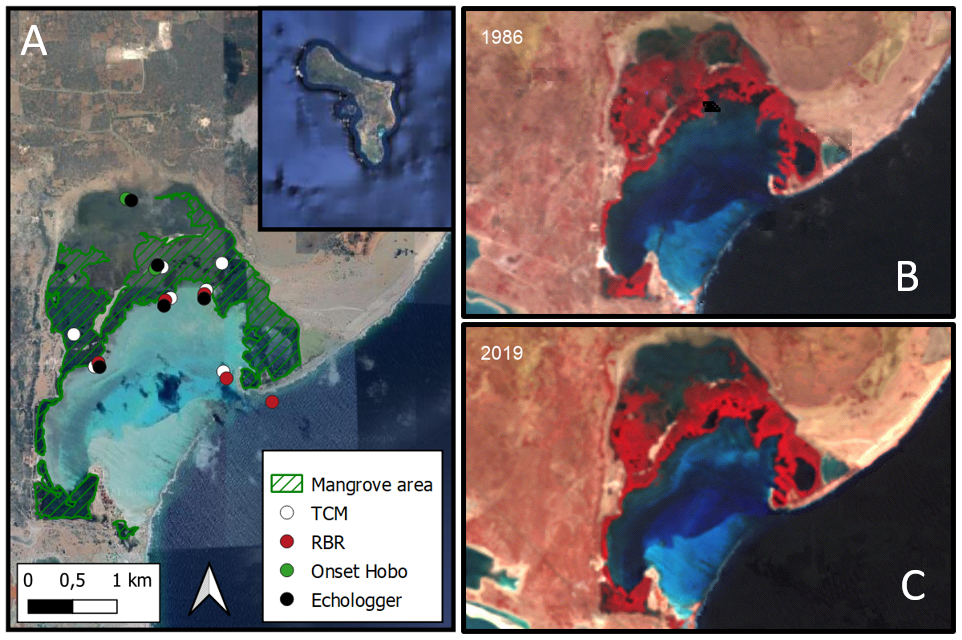R.Gijsman1*, E.M. Horstman1, R. van Zee1, S. Engel2, J. Johnson2,3, J. van der Ploeg4, C. Eckrich4, T.J. Bouma5, D. van der Wal1,5 and K.M. Wijnberg1
1 University of Twente
2 Mangrove Maniacs Bonaire
3 Coastal Dynamics
4 STINAPA Bonaire
5 NIOZ
*corresponding author:
Introduction
The Lac Bay mangroves in Bonaire, Caribbean Netherlands, have undergone large changes over the past 30 years. Particularly the sediment input from land has been excessive, leading to reduced hydrodynamic circulation. As a consequence, large areas of mangroves have been in decline (Figure 1b,c). These developments have affected the health of the forest and led to a decrease in ecosystem services such as carbon sequestration (Senger et al., 2021). The gradient from healthy to degraded and dead mangroves in Lac Bay can provide the information required to understand mangrove stress and response to changing hydro- and sediment dynamics, as well as their impeding effect on mangrove restoration. This knowledge is critical for future assessments of mangrove resilience and restoration potential in response to human-induced environmental stresses.
Methods & Preliminary Results
This study explores the hydro- and sediment dynamics in Lac Bay, Bonaire. Measurement equipment was placed throughout the bay and mangrove system for a 6 week period covering 3 spring-neap tidal cycles (Figure 1a): Tilt Current Meters (Lowell Instruments) to monitor flow velocities, pressure sensors (RBR and Onset HOBO) to monitor water depths and wave characteristics, and Echologgers to track surface elevation changes. An ADCP (Teledyne RD) was used to survey creek dimensions and flow velocity profiles. In addition, bed level elevation and vegetation were mapped through combined (RTK) GPS and manual measurements. Preliminary results of the obtained field data will be shared that reveal generic hydro- and sediment dynamics during spring-neap tidal cycles in Lac Bay.

Figure 1: (A) Mangroves and monitoring stations for hydro- and sediment dynamics in Lac Bay, Bonaire and Landsat images showing mangrove extent changes between 1986 (B) and 2019 (C)
References
Senger D.F., Saavedra Hortua, D.A., Engel, S., Schnurawa, M., Moosdorf, N., and Gillis, L.G. (2021). Impacts of wetland dieback on carbon dynamics: A comparison between intact and degraded mangroves. Science of the Total Environment, doi: 10.1016/j.scitotenv.2020.141817.
I. Surname1*, F.N. Another-Surname2 , Y. Next-Surname2
1 University Name, Country; 2 Organization Name, Country
* Corresponding author: mail.name@organization.org


